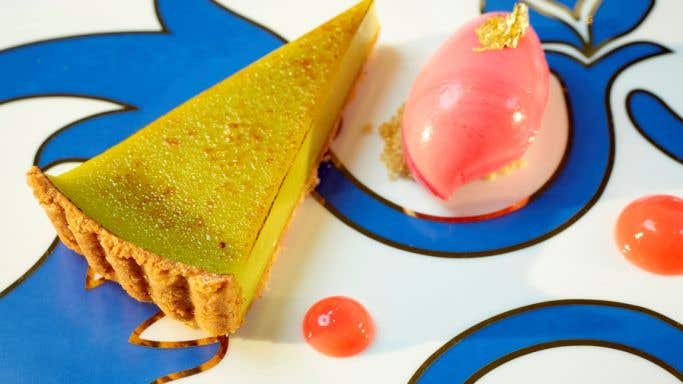This is a version of an article also published by the Financial Times.
I ought to have known better than to stop right in the middle of the dining room at Chutney Mary, the long-established Indian restaurant that has just moved from Chelsea into a new home at the bottom of St James’s Street in central London. Within seconds, a human traffic jam comprising a mâitre d’, several hungry customers and numerous waiters carrying trays of food had backed up behind me.
But this was not entirely my fault. On my left was our guest, a former High Commissioner for India, and as we crossed paths with restaurateur Ranjit Mathrani each recognised the other and stopped. As we are all of an age when our memories require additional hard disc space to work swiftly, it took a few seconds for each to realise that they had met the other before on several occasions during their former careers in Delhi, where Mathrani once worked as a merchant banker.
For the past 25 years Mathrani, together his wife Namitha and sister-in-law Camilla Punjabi, has led a very public double life during which he has built up a wide-ranging Indian restaurant empire in London. Alongside Chutney Mary they also run Veeraswamy off Regent Street and Amaya in Knightsbridge at the more expensive end. In the middle they have created Masala Grill in the space Chutney Mary used to occupy while several branches of Masala Zone represent their least expensive offer.
Despite all this experience, the reincarnation of Chutney Mary in this space, once the esteemed Prunier’s but for several years now an unsuccessful setting for Marco Pierre White, may prove to be Mathrani’s greatest challenge.
Mathrani was quick to admit that at 72 he had just done something that he would advise any restaurateur half his age never even to contemplate. ‘We have just opened two restaurants at the same time’, he explained, his face almost draining of colour as he did so, ‘and one, I realise now, is more than enough. They are like children on which one needs to lavish huge amounts of time and love equally’.
This self-inflicted predicament came about because Mithrani was on the lookout for a new home for Chutney Mary when his agent rang him one Monday morning to tell him that this site was available, and the deal was signed within the week.
The building’s charms are obvious. It is a large corner site in a part of town increasingly popular with wealthy Indians and not that far from Gymkhana, the Indian restaurant that has made such a name for itself in Albemarle Street. As a long-standing restaurant, the St James’s Street site has the requisite infrastructure in place.
But it is made up of two large rooms that do not lend themselves easily to how we enjoy restaurants today. The first room is light and by far the more inviting of the two, having been transformed from what used to be the sedate bar where pre-dinner drinks and dinner orders were taken into a cocktail bar in the evening and a setting for more casual lunchtime food and afternoon tea by day. To get to the restaurant’s reception involves navigating through the modern tables and chairs in this space and, at the end of dinner, embarking on a walk through what was by then a rather desolate and empty bar. This means that one’s final memories of the place, exacerbated by a morose doorman, are not cheery.
The dining room, down a small flight of stairs, is the darker, more boring room in outline but has to remain the principal eating area because of its connection via a dumb waiter to the basement kitchen (there are also a couple of good-sized private dining rooms). By throwing a lot of colour at this space, the warmth of India has been replicated. But so too has one other ingredient that I immediately associate with the subcontinent: noise. A low ceiling and the hard surfaces of the wooden dining tables not only made discussion around the table difficult but also resulted in something I had never witnessed before – the maître d’ having to bend down to make sure he had heard the order properly.
But those other elements I closely associate with India – of heat, of the aroma of ground spices, of those overtones of dry, fragrant curry – were also present in the room and manifest in the dishes we ordered.
Although these were evident in three of our four first courses, a guinea-fowl kebab, squid bhajias and fried Bengal prawns to be dipped in a spicy sauce, the most impressive dish was the most restrained, an elegant rendition of Cornish crab, flaked and served with a garlic butter in a shallow china bowl.
_RB_2-3.jpg)
Our main courses – quail mussalam, tandoori prawns with turmeric and curry leaf, and a vast duck breast roasted with apricot, jaggery, chilli and vinegar (above) – were far more powerful than the first courses, as was a kid gosht biryani with saffron served in a copper dish, one of those serving vessels that as it develops a patina with age will only impart even greater flavour. A numta (lime) tart, pictured top right, provided the cool finale; a salted caramel kulfi considerable sweetness; and a bottle of Palacios 2012 Petalos Bierzo (£52) the liquid refreshment.
Maximising just what these two rooms have to offer remains, however, Mathrani’s biggest issue.
Chutney Mary 73 St James Street, London SW1A 1PH; tel 020 7629 6688. Closed Sunday.

